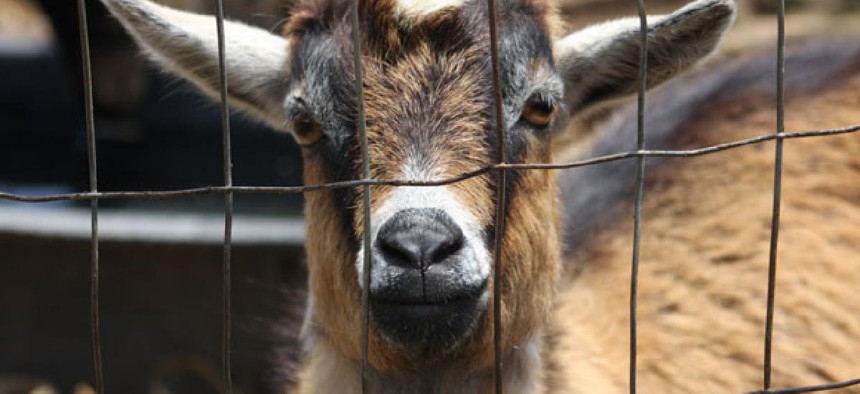
Use of goats, monkeys and pigs is still permitted. Shutterstock.com
Simulated bodies could help military reduce use of animals in surgery training
Training with cut suits may provide better preparation, Marine Corps Times reports.
Military medical trainers’ use of simulated bodies, known as cut suits, can help personnel learn combat surgery without operating on live animals, Marine Corps Times has reported.
The military uses more than 6,000 animals every year for its “wound labs,” which train medics in dealing with traumatic injuries, according to Defense News. Congress in 1983 restricted the use of dogs and cats in these types of exercises, but the use of other animals such as goats, monkeys and pigs is still permitted.
People for the Ethical Treatment of Animals told the Times that training simulations with live animals are not properly supervised, and the animals are not often fully anesthetized. Justin Goodman, an associate director at PETA told the Times that the status quo was going against progress in animal rights.
“The military is out of step with trends around the world and with trends in military training,” Goodman said.
A recent study from researchers at the Rocky Vista University College of Osteopathic Medicine reported that medical students who use cut suits were better prepared for surgeries than other students, the Times said.
One company, Strategic Operations Inc., has developed a cut-suit model that simulates human organs, arteries and blood vessels, providing a realistic experience for trainees. These suits usually are deployed to help train medics for what the company calls “hyper-realistic” situations.
In June, the U.S. Coast Guard came under criticism for a video that showed trainees practicing operations on live goats. Activists claimed that the Coast Guard’s policies violated Agriculture Department protocols for research animals and urged the branch to follow up on these violations.
NEXT STORY: Afghanistan: Eyeing the exits







